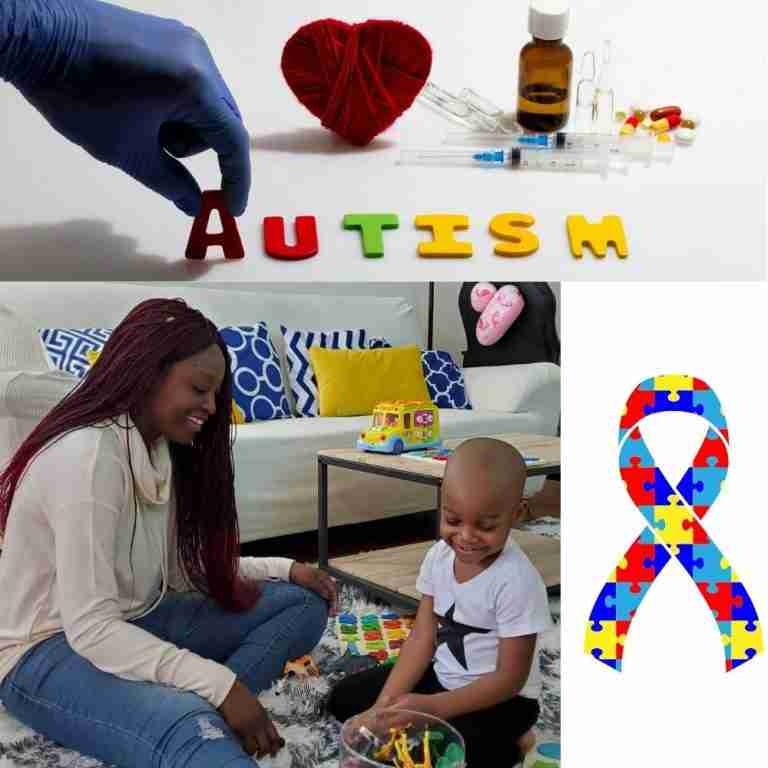Adoption is a beautiful and testing journey. Adopting a child with autism comes with its unique set of responsibilities. If you’re considering adopting a child with Autism Spectrum Disorder (ASD), there are important aspects you need to know to prepare yourself adequately. In this guide, I’ll walk you through what autism is. Find out the common signs of autism, challenges faced by autistic kids, and treatment options available. Most importantly, I’ll offer some actionable insights on how you as adoptive parents can help your future child thrive.
What is Special Needs Adoption?
Special needs adoptions refer to adopting children who have physical, emotional, or developmental disabilities. These children often require additional medical care, educational support, or adaptive equipment to help them live their best life. The phrase ‘special needs’ is broad and can include various conditions; one of them being Autism Spectrum Disorder.
Understanding Autism Spectrum Disorder (ASD)
Autism is a complex developmental disorder that affects social interaction, communication skills, and behavior. It is a spectrum disorder, meaning it affects individuals differently, and symptoms can range from mild to severe. Autism is diagnosed based on behavioral symptoms, and those symptoms can vary significantly among people. Therefore, autism is often described as existing on a “spectrum” that encompasses a wide range of abilities and challenges. Children with autism often have developmental delays, sensory processing disorder and other unique needs. Here are some of the common symptoms of autism:
Social Challenges
- Difficulty in understanding social cues, norms, and nonverbal communication like facial expressions and tone of voice.
- May struggle with forming and maintaining relationships.
- Often prefers to be alone or finds it challenging to engage in social activities.
Communication Difficulties
- Delays or deficits in language development, including difficulties in initiating or sustaining conversations.
- Some individuals may be nonverbal and not speak at all. Others may have rich vocabularies and can talk about specific subjects in great detail.
Repetitive Behaviors
- Stereotyped or repetitive movements (like hand-flapping, rocking, or spinning).
- Insistence on sameness and routines, and distress when routines are disrupted.
Sensory Sensitivities
- Over- or under-reaction to pain or sensory stimuli, such as lights, textures, or sounds.
Intellectual and Learning Profile
- A range of intellectual functioning, from below-average to average or above-average intelligence.
- Strengths in specific areas, such as mathematics, music, or memory, are common in some individuals with ASD.
It’s important to note that not everyone will have all of these symptoms. The severity of symptoms can vary widely from person to person. Some people with ASD may live entirely independently, while others may need substantial support to perform basic activities of daily living.
The diagnosis and treatment of autism are generally multidisciplinary. It involves psychologists, psychiatrists, neurologists, speech and language therapists, and occupational therapists, among others. While the exact cause of autism is not known, a combination of genetic and environmental factors is believed to contribute to the development of ASD. Early diagnosis and intervention are generally thought to be beneficial. Some people with ASD can make gains and improvements at any age.
Challenges Faced by Autistic Kids
Children with Autism Spectrum Disorder (ASD) can face a range of challenges that may impact their development, education, social interactions, and day-to-day life. Here is a more detailed explanation of some of these challenges:
Social Interaction
- Understanding Social Cues: Many autistic children find it difficult to interpret social signals such as facial expressions, body language, or tone of voice. This can make it challenging to form and maintain friendships.
- Sharing Attention: Shared attention, like watching a movie together and discussing it, can be difficult for some autistic children. This can limit social engagement and learning.
Communication
- Speech Delays: Many children with ASD experience delays in speech and language skills. Some might not speak at all.
- Non-Verbal Communication: In addition to spoken language, understanding and using gestures, making eye contact, and other forms of non-verbal communication can also be challenging.
Repetitive Behaviors
- Need for Routine: Many autistic children rely heavily on routines. They may experience stress or discomfort when those routines are disrupted.
- Repetitive Movements: Actions like hand-flapping, rocking back and forth, or being preoccupied with lights or moving objects are common.
Sensory Issues
- Overstimulation: Sensory sensitivities to light, sound, touch, or other sensory inputs can make environments like a classroom or a grocery store overwhelming.
- Under-Reactivity: On the flip side, some children may be under-responsive to pain or other sensory experiences.
Cognitive and Learning Challenges
- Executive Functioning: Skills like impulse control, emotional regulation, and organizational skills can be areas of difficulty.
- Learning Styles: While some autistic children excel in subjects like math or music, they may struggle with abstract concepts, problem-solving, or subjects that require a lot of social interpretation, like literature.
Emotional Challenges
- Anxiety and Stress: Many autistic children experience heightened anxiety, particularly in social situations or when dealing with changes in routine.
- Difficulty with Emotional Regulation: There might be more frequent or intense episodes of emotional dysregulation, such as meltdowns or shutdowns, which can be distressing for the child and those around them.
Other Co-occurring Conditions
- ADHD, Anxiety, and Depression: Many children with autism also have other additional needs and conditions like Attention Deficit Hyperactivity Disorder (ADHD), anxiety disorders, or depression, which can compound their challenges.
Social Stigma and Isolation
- Misunderstanding from Peers and Adults: Due to their atypical behavior, autistic children might face bullying or social exclusion.
Educational System
- Inadequate Support: Not all educational settings are equipped to support the diverse needs of autistic children, which can impede their academic and social development.
Challenges Faced by Parents Adopting A Child with Autism
Parenting a child with Autism Spectrum Disorder (ASD) comes with unique challenges, though it’s important to note that many parents also describe immense joy and fulfillment in raising their children. The challenges can be both practical and emotional, affecting various aspects of life from daily routines to long-term planning. Below are some of the challenges commonly faced by parents of children with autism:
Emotional and Psychological Challenges
- Accepting the Diagnosis: Coming to terms with an autism diagnosis can be emotionally taxing. Parents often go through stages of grief, denial, guilt, and eventual acceptance.
- Isolation: Parents may find themselves becoming socially isolated, either due to a lack of understanding from their own peers or because the child’s behavioral challenges make social outings difficult.
- Stress and Anxiety: The constant worry about their child’s future, educational needs, and social acceptance can lead to high levels of stress and anxiety for parents.
Daily Life and Routine
- Handling Sensory Sensitivities: Parents must be continually aware of potential triggers for sensory overloads, like bright lights or loud noises, which can be extremely limiting.
- Managing Meltdowns or Aggressive Behaviors: Emotional dysregulation can lead to ‘meltdowns,’ which are different from typical temper tantrums and can be emotionally and physically exhausting to manage.
- Establishing and Maintaining Routines: Many autistic individuals rely on routines for stability. Disruptions and sudden changes can cause distress for both the child and the parent.
Communication Challenges
- Difficulty in Understanding the Child: Especially for non-verbal or minimally verbal children, parents may find it very challenging to understand their child’s needs, emotions, or discomforts.
- Explaining to Siblings: If there are neurotypical siblings, parents have the added responsibility of explaining their sibling’s behavior and needs, and ensuring that they don’t feel neglected.
Educational Challenges
- Navigating the Education System: Finding the right educational setting, advocating for the child’s needs, and ensuring they receive the appropriate support can be daunting.
- Homework and Educational Support: For some children, academic tasks can be frustrating or triggering, requiring a significant time and emotional investment from parents.
Financial Strain
- Cost of Therapies and Treatments: Many of the most effective treatments and therapies for autism are expensive and may not be covered by insurance.
- Potential for Reduced Income: One parent may reduce work hours or leave the job market entirely to care for their child, leading to financial strain.
Social Challenges
- Judgment from Others: A lack of public understanding about autism can lead to judgment or unsolicited advice from friends, family, and even strangers, which can be emotionally draining.
- Strain on Marriage or Partnerships: The stress and emotional toll of raising a child with special needs can put strain on a marriage or partnership.
Future Planning
- Long-term Care Concerns: Parents often worry about who will care for their child once they are no longer able to do so, leading to concerns about long-term financial planning, guardianship, and support services.
Support networks, including extended family, friends, professionals, and support groups, can provide invaluable assistance. Specialized training and respite services can also help parents manage these challenges more effectively and bring a positive impact. Despite these difficulties, many parents find that their experiences are ultimately rewarding and enriching, bringing a unique perspective to the joys and challenges of parenting.
Treatment Options Available
The treatment landscape for Autism Spectrum Disorder (ASD) is quite diverse, drawing from a variety of disciplines and approaches. Treatment is typically tailored to the individual child’s needs, as autism manifests differently from person to person. Here is an overview of some of the most commonly utilized treatments and therapies:
Behavioral Therapies
- Applied Behavior Analysis (ABA): One of the most researched and commonly used therapies, ABA focuses on improving specific behaviors and skills through reinforcement strategies.
- Pivotal Response Treatment (PRT): A play-based therapy, PRT aims to improve social skills and communication by focusing on “pivotal” behaviors like motivation and responsivity to social stimuli.
- Early Start Denver Model (ESDM): This is an early intervention model that combines ABA with relationship-based approaches, focusing on children between the ages of 1 and 5.
Developmental Therapies
- Floortime: Also known as the Developmental, Individual Differences, Relationship-Based (DIR) model, Floortime focuses on emotional and relational development by meeting the child at their current developmental level and building upon their strengths.
- Relationship Development Intervention (RDI): This therapy focuses on building social and emotional skills by engaging in dynamic and reciprocal interactions.
Educational Interventions
- TEACCH (Treatment and Education of Autistic and related Communication-handicapped CHildren): This is an educational approach that relies on visual cues and a structured environment to help children learn and apply various skills.
- Special Education Services: Many children qualify for individualized education programs (IEPs) or 504 Plans in public schools, which outline specific educational accommodations and goals.
Communication and Speech Therapy
- Speech-Language Therapy: Targets speech and language deficits, helping children improve verbal communication skills, or learn to use alternative communication systems like Picture Exchange Communication System (PECS) or Augmentative and Alternative Communication (AAC) devices.
- Social Skills Training: These are group or individual sessions aimed at improving autistic children’s social skills, understanding social cues, and developing better communication strategies.
Occupational Therapy
- Sensory Integration Therapy: Often performed by occupational therapists, this approach aims to help children manage sensory sensitivities and improve motor skills.
- Daily Living Skills Training: Helps in teaching basic skills like dressing, eating, and toileting.
Medication
- While there is no medication that treats autism itself, medications may be used to manage symptoms such as hyperactivity, inattention, or anxiety. Commonly prescribed medications include antipsychotics like Risperidone, and ADHD medications like methylphenidate.
Alternative Therapies
- Some parents explore alternative therapies like dietary interventions, music therapy, or animal-assisted therapy. However, these are generally less supported by scientific evidence compared to other treatments.
Family Support and Training
- Parental involvement is crucial in the treatment of ASD. Parent training programs can equip the whole family with the tools they need to support their child effectively.
Technology-Aided Approaches
- Apps and software, often designed for tablets or computers, can help children with ASD improve social and cognitive skills through interactive activities.
It’s essential for adoptive parents to work with a multidisciplinary team of healthcare providers, including pediatricians, psychologists, occupational therapists, and speech therapists, to develop a comprehensive treatment plan for their child. Due to the range of challenges associated with autism, a combination of these therapies is often the most effective approach. Parents should also be cautious of “miracle cures” or unproven treatments, and consult with qualified professionals for evidence-based care.
How Adoptive Parents Can Help
As parents adopting a child with autism, you may face a unique set of challenges when caring for your child, in addition to the general challenges that come with adoption and parenting. Understanding the child’s needs, obtaining proper diagnosis and treatment, and providing a supportive environment are crucial steps. Here are some detailed suggestions on how you can help your autistic child.
Early Stages: Understanding and Diagnosis
1. Become Informed: When adopting a child with autsim, educate yourselves about autism to better understand the child’s needs. Books, academic journals, webinars, and advice from healthcare professionals can provide valuable insights.
2. Initial Assessment: If autism is suspected, it’s important to get a thorough diagnostic assessment as soon as possible to identify needs and inform treatment planning.
Medical and Therapeutic Support
1. Multidisciplinary Team: Parents adopting a child with autsism should work with a team of healthcare providers like pediatricians, occupational therapists, speech therapists, and psychologists to formulate an individualized treatment plan.
2. Consistency in Treatment: Stability and consistency are key in treating autism. Adoptive parents need to ensure that interventions are consistently applied, even during transitional periods like moving to a new home.
Daily Routines
1. Structured Environment: Many children with autism thrive in structured environments. When adopting a child with autism, establish clear routines and use visual aids to outline daily activities.
2. Sensory Sensitivity: Create an environment that takes into account any sensory sensitivities the child may have, such as dimming lights, reducing noise, or using sensory-friendly materials.
Emotional and Social Support
1. Secure Attachment: Establishing a secure emotional attachment may take extra effort but is crucial. Consistency, emotional availability, and sensitivity to the child’s needs can help.
2. Social Skills Training: Work on social interaction through play and other activities. Enroll the child in social skills classes if available and advised.
Educational Needs
1. IEP or 504 Plan: Work with educational professionals to develop an Individualized Education Plan (IEP) or a 504 Plan that outlines specific educational accommodations and goals.
2. Liaise with Teachers: Keep an open line of communication with the child’s teachers to monitor progress and challenges, and to ensure that educational strategies align with other therapeutic interventions.
New Family Dynamics
1. Sibling Relationships: If there are other children in the home when sdopting a child with autsim, educating them about autism can help foster a more understanding and supportive environment.
2. Family Therapy: In some cases, when adopting a child with autis, family counseling can help. Family members can better understand autism and how to communicate more effectively.
Community Support and Self-Care
1. Support Groups: Joining support groups for parents of children with autism or those adopting a child with autism can offer emotional support and practical advice.
2. Respite Care: Don’t underestimate the importance of self-care as aparent adopting a child with autism. Make use of respite services to take short breaks to recharge.
3. Legal and Financial Planning: Adoption may come with legal intricacies. Adding a special-needs child to the mix makes it crucial to consult experts for financial and estate planning.
Cultural and Identity Aspects
1. Cultural Sensitivity: For cross-cultural adoptions, it’s important to be sensitive to how autism is perceived and treated in the child’s culture of origin.
2. Identity Development: Assist the child in forming a healthy identity that incorporates both their adoptive family and their biological heritage, as well as their neurodiversity.
Adopting of a child with autism is a significant commitment that comes with its own set of challenges and rewards. It’s vital for adoptive parents to be prepared, informed, and supported as they embark on this parenting journey. It requires a deep commitment, not just emotionally but also in terms of time and resources. However, with the right information and support network, you can provide a loving home where your adopted child can thrive. Remember, every child is unique and deserving of unconditional love, understanding, and a chance for a fulfilling life.





